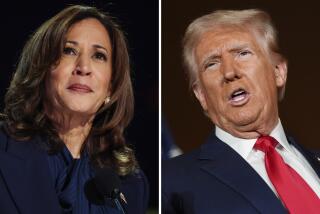Capital-Gains Idea Is a Loser
- Share via
Perhaps he considered it not quite ripe for prime time, so President Reagan tucked the proposal away in the massive written legislative message that he sent to Congress the other day in conjunction with his State of the Union address. The idea, to reduce the capital-gains tax rate to 15%, should stay tucked away. Since it has been embraced by Vice President George Bush as part of his presidential campaign, the reduction is not likely to see the light of day in the Senate so long as Sen. Bob Dole of Kansas remains the Republican leader and a Bush competitor for the presidency.
But the move to reduce the capital-gains rate from the present 28% maximum to 15% will not go away. It is being promoted by high-powered lobbying organizations like the American Council for Capital Formation that raise the old supply-side argument that cutting tax rates will provide an incentive for investment and thereby increase revenue income. But respected economists contend that the rate cut could lose the Treasury as much as $7 billion annually.
Before 1987, gains or losses from the sale of capital assets like real estate or stocks held for six months or more received preferred tax treatment. For individuals, 60% of the gain was excluded from income. So the profit was taxed, for a person in the highest bracket, at an effective rate of 20%. Under the tax-reform measure, the exclusion was eliminated and capital-gains profits were taxed as regular income at the reduced maximum rate for individuals of 28%. The Administration’s major argument for reform was that capital gains should be treated like all other income so as to discourage the diversion of money into unproductive tax shelters.
Now Bush and others want to restore the special break for capital gains by reducing the maximum to 15%, which is the lower of the two permanent income-tax brackets. The break point between the 15% and the 28% bracket is about $44,000 for a family of four. Advocates contend that past reductions in the capital-gains tax brought in more money, but studies by the Congressional Budget Office and the Treasury dispute this. The claims are based primarily on increased capital sales designed to beat changes in the tax law.
Once a rate reduction to 15% was in effect, the wealthy would channel regular income into capital investments, as under the old law, thereby lowering revenues. Some such investments might lead to greater economic productivity, but many would not. The tax is assessed only when the investment is sold. According to Citizens for Tax Justice, people with incomes of $200,000 and more saved an average $41,683 in taxes annually by taking advantage of the capital-gains exclusion under the old law. The break was worth less than $20 a year to the other 88% of American families.
If Congress begins to tinker with the Tax Reform Act of 1986, it should do so with the idea of restoring some equity and progressivity to the tax system, not of providing even more tax reductions that would benefit mostly the rich.
More to Read
Get the L.A. Times Politics newsletter
Deeply reported insights into legislation, politics and policy from Sacramento, Washington and beyond. In your inbox twice per week.
You may occasionally receive promotional content from the Los Angeles Times.










